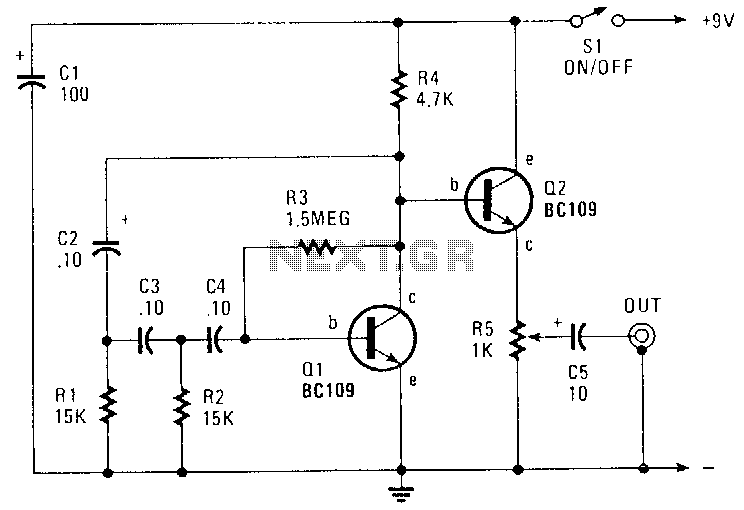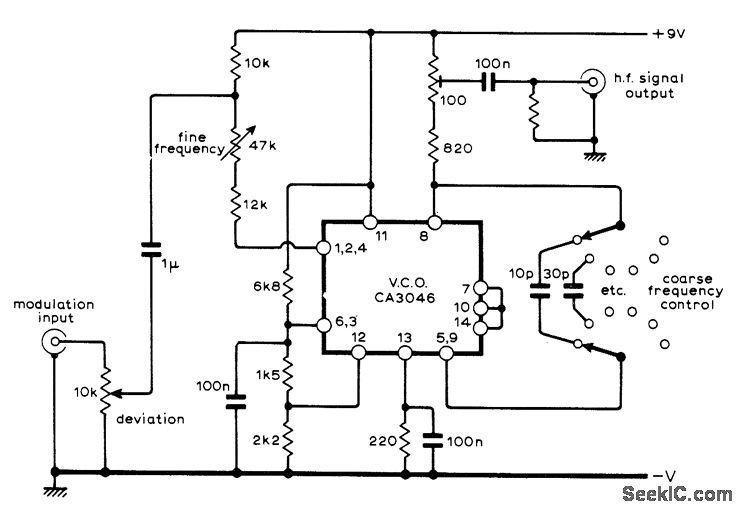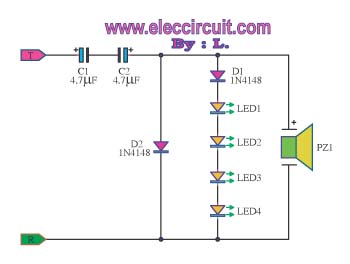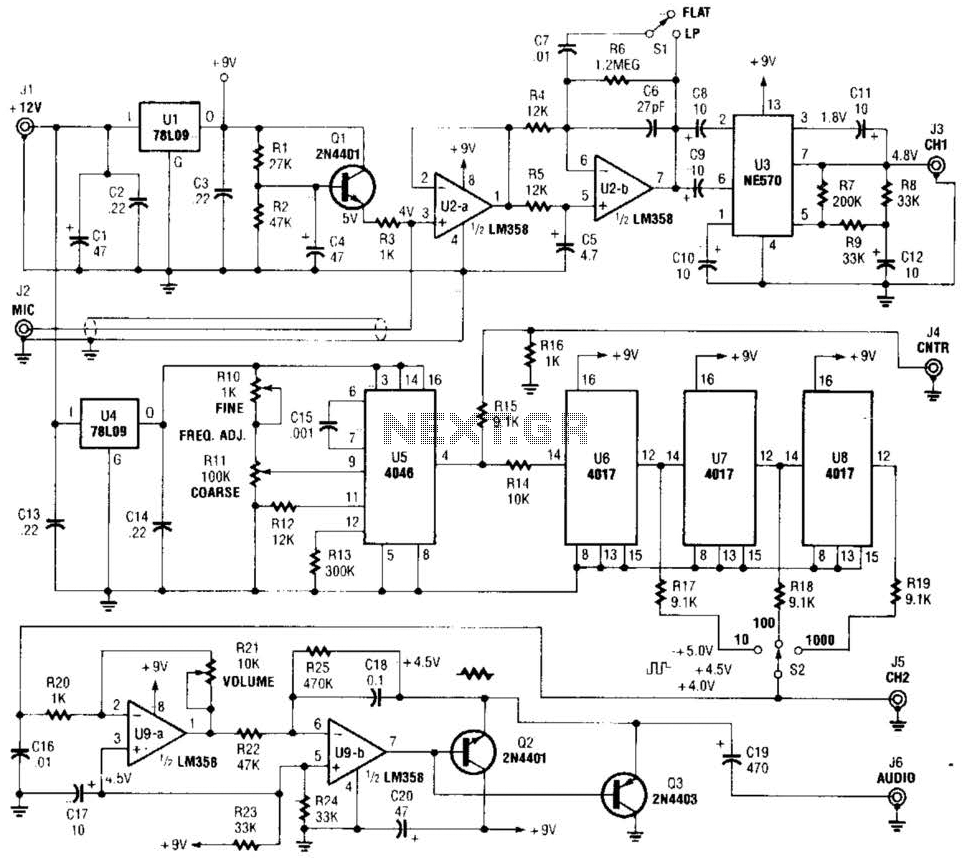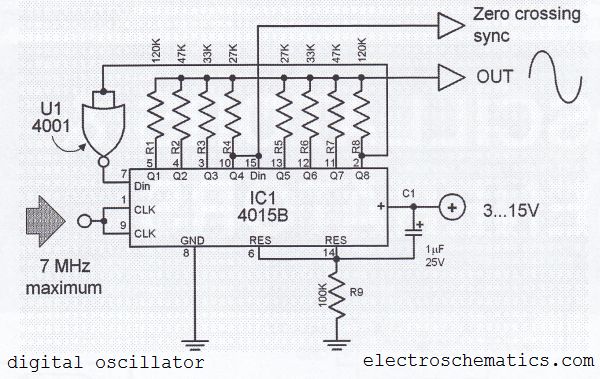
Test Signal Generator
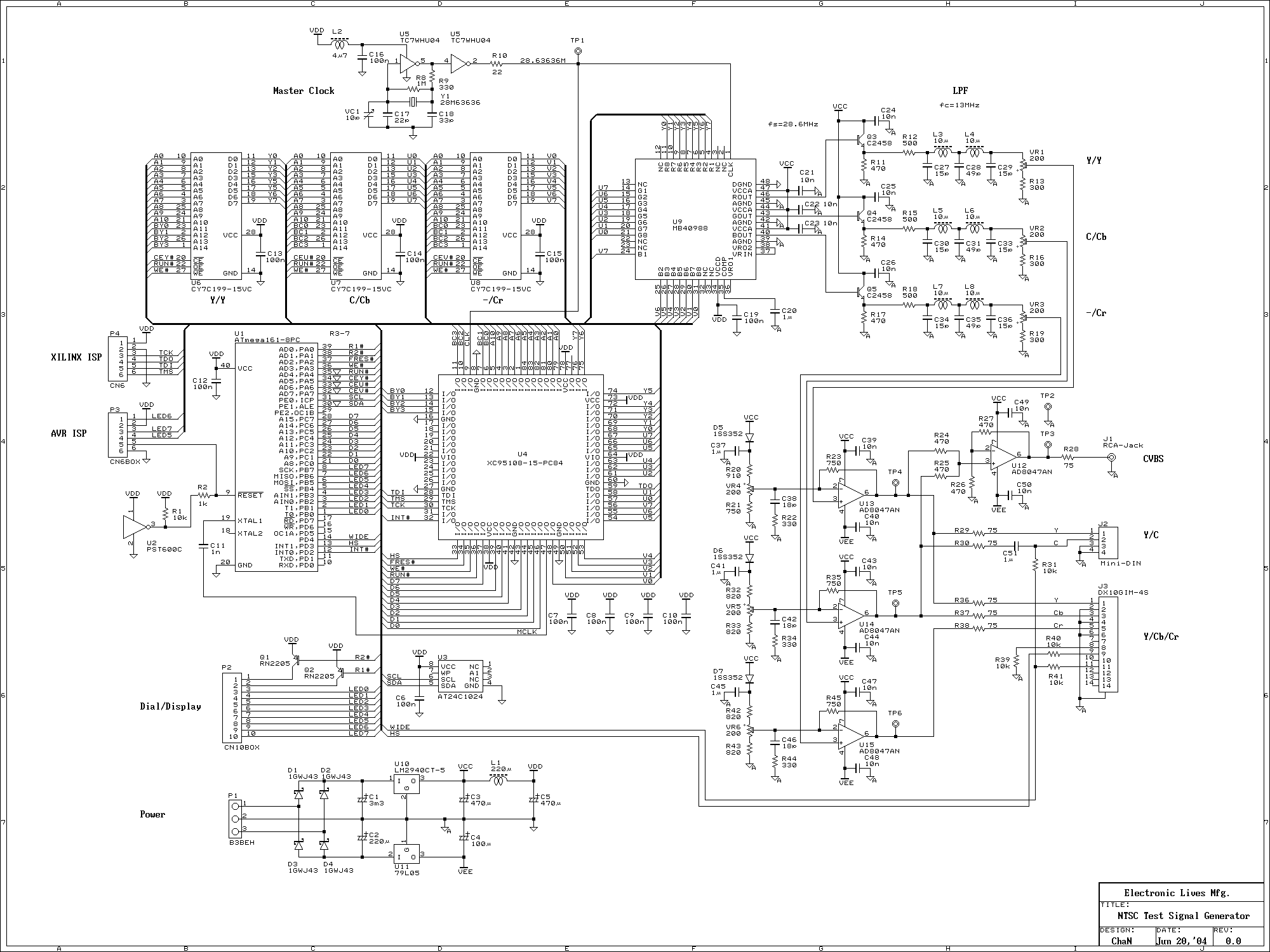
This signal generator uses a three channel DAC to generate Composite video signal (CVBS) and S video signal (Y/C separated) at the same time, left one channel is not used in NTSC format. It is assigned for one of the color components of Y/CB/CR video format. More: This feature was not planned some years ago, but it has been added when started to draw the schematic this year, because NTSC television system might be obsoleted in the near future. The two different video format, component video and NTSC video, work in
The signal generator described employs a three-channel Digital-to-Analog Converter (DAC) to produce both Composite Video Signal (CVBS) and S-Video (Y/C separated) outputs simultaneously. The architecture utilizes one channel of the DAC to generate the Y (luminance) component while the other two channels are utilized for the color components in the Y/CB/CR format. The design acknowledges the impending obsolescence of the NTSC television system, which may necessitate a shift to more modern video formats.
In the schematic, the DAC's three output channels are configured to interface with respective video processing circuits. The first channel outputs the Y component, which is essential for both CVBS and S-Video formats. The second channel is dedicated to the Cb (blue-difference chroma) component, while the third channel handles the Cr (red-difference chroma) component, enabling the generation of high-quality component video signals.
The design includes necessary filtering and buffering stages to ensure signal integrity and minimize distortion across the outputs. The CVBS output is derived from combining the Y, Cb, and Cr signals, while the S-Video output is achieved by separating the Y and C signals, allowing for improved video quality through reduced cross-talk between luminance and chrominance.
This dual-output capability enhances versatility, making the signal generator suitable for various applications, including testing and interfacing with both legacy NTSC systems and newer component video standards. The design reflects an awareness of the evolving landscape of video technology, ensuring compatibility with both current and future standards.This signal generator uses a three channel DAC to generate Composite video signal (CVBS) and S video signal (Y/C separated) at the same time, left one channel is not used in NTSC format. It is assigned for one of the color components of Y/CB/CR video format. This feature was not planned some years ago, but it has been added when started to draw the schematic this year, because NTSC television system might be obsoleted in the near future. The two different video format, component video and NTSC video, work in 🔗 External reference
The signal generator described employs a three-channel Digital-to-Analog Converter (DAC) to produce both Composite Video Signal (CVBS) and S-Video (Y/C separated) outputs simultaneously. The architecture utilizes one channel of the DAC to generate the Y (luminance) component while the other two channels are utilized for the color components in the Y/CB/CR format. The design acknowledges the impending obsolescence of the NTSC television system, which may necessitate a shift to more modern video formats.
In the schematic, the DAC's three output channels are configured to interface with respective video processing circuits. The first channel outputs the Y component, which is essential for both CVBS and S-Video formats. The second channel is dedicated to the Cb (blue-difference chroma) component, while the third channel handles the Cr (red-difference chroma) component, enabling the generation of high-quality component video signals.
The design includes necessary filtering and buffering stages to ensure signal integrity and minimize distortion across the outputs. The CVBS output is derived from combining the Y, Cb, and Cr signals, while the S-Video output is achieved by separating the Y and C signals, allowing for improved video quality through reduced cross-talk between luminance and chrominance.
This dual-output capability enhances versatility, making the signal generator suitable for various applications, including testing and interfacing with both legacy NTSC systems and newer component video standards. The design reflects an awareness of the evolving landscape of video technology, ensuring compatibility with both current and future standards.This signal generator uses a three channel DAC to generate Composite video signal (CVBS) and S video signal (Y/C separated) at the same time, left one channel is not used in NTSC format. It is assigned for one of the color components of Y/CB/CR video format. This feature was not planned some years ago, but it has been added when started to draw the schematic this year, because NTSC television system might be obsoleted in the near future. The two different video format, component video and NTSC video, work in 🔗 External reference
